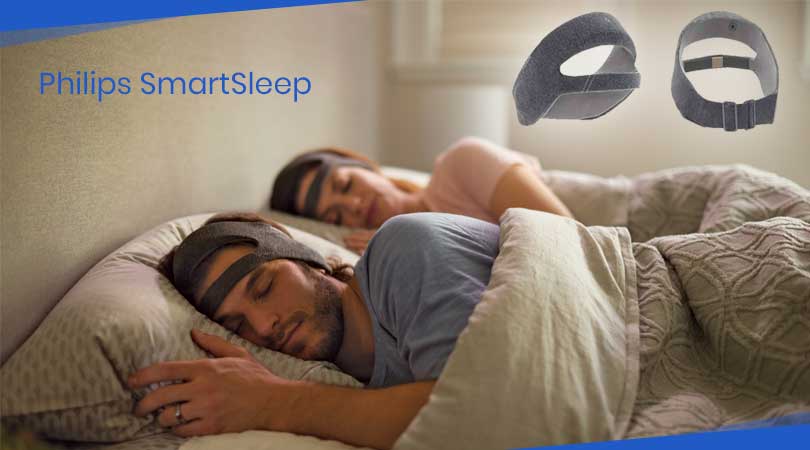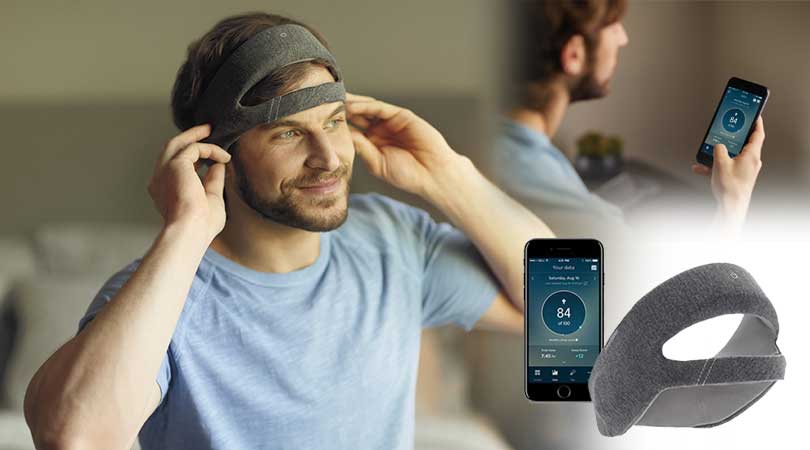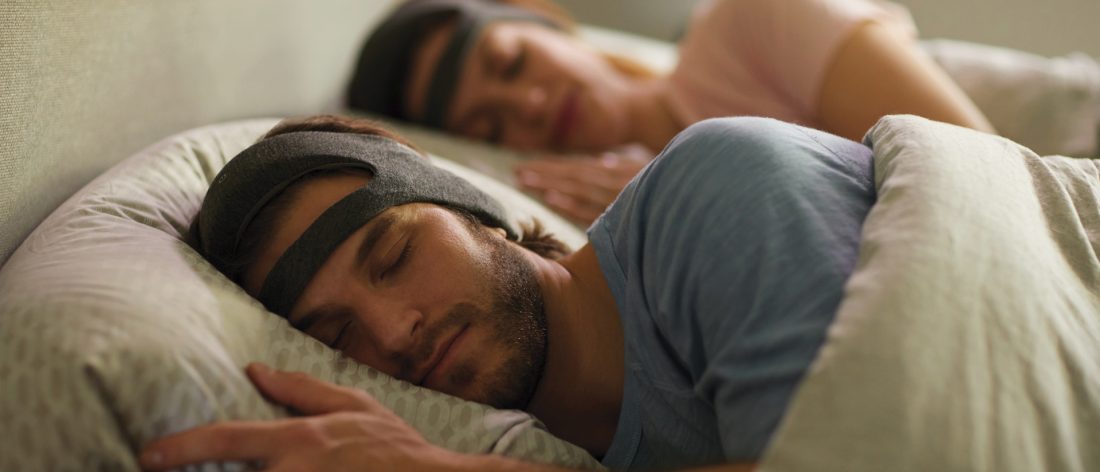As the bustling lifestyle brings us closer to constant fatigue and exhaustion, it is important that we try to find enough sleep and rest when we go to bed at night. While a lot of things help us find respite, introduced in CES 2018, Philips SmartSleep sleep system promises to get you the sleep you need and deserve. Even while looking like a headband made of soft foam, the Philips SmartSleep headband isn’t just tracking sleep like the conventional sleep tracking devices; it is expected to do more than that.
Sleep tracking isn’t new and our sleep has been monitored ever since the introduction of accelerometers and fitness bands which measure our heart rate and sleep duration after which they calculate the quality of sleep you received the previous night. While these devices work well to give us information about our sleep habits, they aren’t aimed at providing a sound solution which the Philips SmartSleep headband aims to solve.
According to a study published in Frontiers in Human Neuroscience, for a body to gain deep sleep and build stronger memories, it needs to be in contact with this beautiful sound called ‘Pink Noise’ which is nothing but a combination of frequencies which are both high and low, mixed together to make them sound more balanced and natural. Thus in CES 2018, Philips SmartSleep was able to introduce a similar concept to the world. But let’s first look at the design of the device.

Design
With a look that makes it seem like a medical headband that is made from soft foam, Philips SmartSleep headband is to be worn in bed as you sleep. This headband is expected to be of the sizes in medium and large. Keeping in mind that is the global average of around 70% of the people‘s head size, the size of the said headband in a medium is expected to be somewhere around 54-60cm. Whereas the large headband is could be of the circumference 60-66cm.
Along with that, it would also be coupled with 90 Smartsleep sensors that would be provided as an introductory offer. Philips has still not spoken about the price of additional sensors that would be required once the initial 90-day supply of sensors is exhausted.
While the Philips SmartSleep headband looks a little uncomfortable to wear, a few pilot studies suggest that the ‘Pink Noise’ really does help a human achieve sound sleep.
How it works?
This device works in said to work in an extremely efficient way. To handle and make sure you find yourself in deep and sound sleep, simply download the app associated with the device and collaborate them both. Once done that, wear this headband before going to sleep and it will start working as it should. The sensors connected to the headband will send the data back to the application which will analyze your sleep pattern, comfort, breaths, and heart rate and find out when you have reached the deepest levels of your sleep. At this point, the headband will play a subtle ‘pink noise’ which is associated with the rising and falling activity of your brain in a looping pattern. This ‘Pink noise’ is said to efficiently drown out the rest of the background noise and provide a stable environment which is subtle enough to not wake you up but at the same time, strong enough to enforce a favorable environment of a deep sleep where reportedly we find the maximum comfort and state of rest which can heal you of your tiredness.

After you’ve woken up and the application has finished collecting the data throughout the night, it will provide you the score of your sleep which, reportedly, measures the level of sleep you’ve had the night before.
With such rest and comfort finally gracing your mind, it is expected that you will be sharper and alert in the coming day due to your mind being fully calm and rested. With such comfort, your quality of sleep can also drastically let you feel more energized and active.
According to Philips, after testing the same with an undisclosed number of subjects who felt constantly sleep deprived and tired through the day, 70% of them felt being less tired. Philips also claims it to be the only ‘Clinically proven’ wearable solution to the problem of loss of sleep and fatigue through the day and claims that you would see the significant benefits on the first night itself.
Cost
Philips SmartSleep price is expected to be somewhere around $399 for only the headband itself. As mentioned earlier, Philips hasn’t confirmed the price of the wearable sensors that you would require after the initial 90 day supply of sensors is exhausted. It is however notable that in CES 2018, Philips SmartSleep saw another deep sleep remedy device called Dreem that costs somewhere around $449, and is another wearable sleep assisting device.
What do we think?
40% of the Americans on average are said to be deprived of a sufficient sleep or feel tired or inattentive due to lack of comfortable sleep the previous night. While being at $399 it’s definitely doing better than its competitor at the moment and provides a solid paperwork to back its belief of giving a lasting solution for sleep deprivation and constant fatigue the next day and seems like a great device for those who wish to feel more energized the next day.






